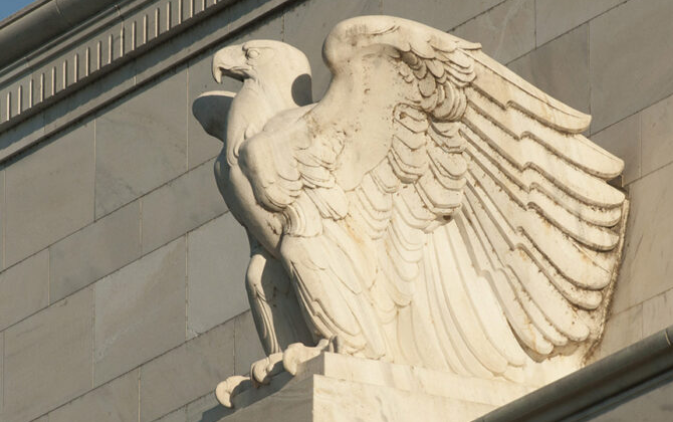Are You Certain That The Fed Has Tightened?

Some monetary hawks want Jay Powell to emulate Paul Volcker. I wonder if they realize what that means. After Paul Volcker was appointed to chair the Fed in August 1979, monetary policy remained highly expansionary for another 2 years. NGDP growth averaged over 10% between 1979:Q3 and 1981:Q3. And this was not due to “policy lags”; indeed nominal growth actually sped up to an annual rate of over 14% in Volcker’s second year (the period from 1980:Q3 to 1981:Q3.) Only in the summer of 1981 did Volcker get serious about inflation. Unfortunately, the myth of Volcker has crowded out the reality.
There’s currently a vigorous debate about whether the Fed’s “tight money” policy is too restrictive. But what if both sides of the debate are wrong? What if the Fed hasn’t even adopted a tight money policy?
Long time readers know that I don’t view rising interest rates or quantitative tightening as being useful indicators of the stance of monetary policy. My views are closer to those of Ben Bernanke:
The imperfect reliability of money growth as an indicator of monetary policy is unfortunate, because we don’t really have anything satisfactory to replace it. As emphasized by Friedman (in his eleventh proposition) and by Allan Meltzer, nominal interest rates are not good indicators of the stance of policy, as a high nominal interest rate can indicate either monetary tightness or ease, depending on the state of inflation expectations. Indeed, confusing low nominal interest rates with monetary ease was the source of major problems in the 1930s, and it has perhaps been a problem in Japan in recent years as well. The real short-term interest rate, another candidate measure of policy stance, is also imperfect, because it mixes monetary and real influences, such as the rate of productivity growth. . . .
Ultimately, it appears, one can check to see if an economy has a stable monetary background only by looking at macroeconomic indicators such as nominal GDP growth and inflation. On this criterion it appears that modern central bankers have taken Milton Friedman’s advice to heart.
I prefer NGDP growth, as inflation is distorted by supply shocks. (Total labor income might be even better.)At the beginning of the year, I argued that the Fed should sharply slow NGDP growth in order to move toward their 2% inflation target. In the long run, NGDP growth needs to be about 3.5% to deliver 2% inflation. I didn’t expect the Fed to get there immediately, but I also didn’t expect NGDP growth to be so rapid during the first two quarters of 2022 (a 7.5% annual rate.)The third quarter figures are not out yet, but forecasters seem to expect another big number.
Some might argue that the sort of monetary tightening that I proposed would have resulted in unacceptable pain in the labor market. That’s possible, although I doubt that with NGDP growth slowing to about 4% by yearend, unemployment would have risen above 5%. But this is all a moot point, as the Fed actually imposed absolutely no pain on the labor market. Indeed, the unemployment rate has recently fallen to a 50-year low of 3.5%. So if you are one of those people that believe tight money is bad because it imposes pain on labor markets, can I assume that you agree with me? Can I assume that you also believe that the Fed has not tightened at all?
To be clear, I do not view the unemployment rate as an indicator of whether money is easy or tight. I prefer to look at NGDP growth. But lots of people do seem to view unemployment as an important policy indicator. And unless I’m mistaken, they often are the same people that complain the Fed has done too much tightening. I see hand wringing about what Fed “tightening” is doing to developing countries. Just imagine the shape those countries would be in if the Fed actually were tightening—if it actually were sharply slowing NGDP growth to a level consistent with 2% inflation!
I’d like to avoid debates over semantics. If someone wishes to argue that Fed policy in 2022 represents tightening because it’s gone from extremely expansionary in 2021 to merely very expansionary in 2022, I won’t quibble with that characterization. Rather, I’m encouraging people to look beyond words and try to focus on what the Fed is actually doing. And while NGDP is not perfect, it’s far superior to lazy assumptions about the stance of Fed policy in much of the media. Also keep in mind that the fast NGDP growth of 2021 partly (not entirely) reflected a healthy return to trend, whereas the slightly less extreme NGDP growth of 2022 is occurring in an economy that has already overshot trend and is overheating.
Some argue that Fed policy affects the economy with a lag. That’s true of sticky wages and prices, but it’s not really true of NGDP. If NGDP growth is not slowing, then monetary policy is not tightening to any significant extent. So why are interest rates much higher than in 2021? Partly because the economy is much hotter than the markets expected in 2021. (Fiscal stimulus may also play a role.)
To summarize, let’s hope that Powell does not “do a Volcker”.Let’s hope he doesn’t wait two entire years after it’s clear we have a demand-side inflation problem before tightening. Let’s hope he gets serious about inflation much more quickly than Volcker did.
Update: I did this post before knowing that Ben Bernanke was awarded the Nobel Prize in Economics.Bernanke has had an important influence on my own work, and I am very pleased to see him earn this recognition. Also, congratulations to Douglas W. Diamond and Philip H. Dybvig for work on bank runs.I am currently traveling, but will have more to say on Bernanke in future posts.
More By This Author:
People Who Adhere To Cultural NormsTime To Pay The Piper?
Solidarity



